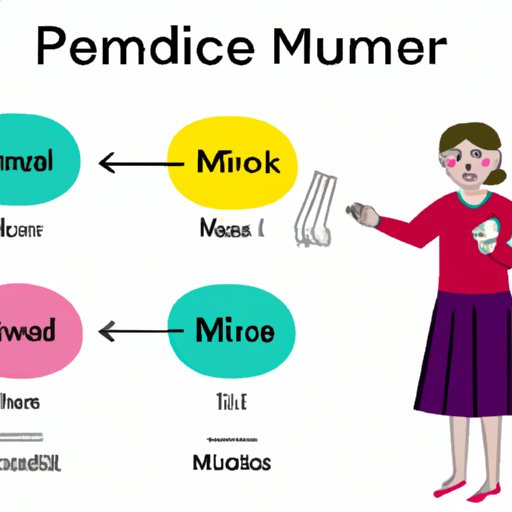
I. Introduction
Public speaking can be daunting for many people, especially when it comes to memorizing a speech. However, with the right techniques, anyone can master the art of public speaking. This article highlights the different strategies that can help make memorizing a speech more manageable. Whether you’re a student, a professional, or anyone looking to fine-tune your public speaking skills, this article provides practical tips that you can use to improve your memory and boost your confidence.
II. The Chunking Method
The Chunking Method involves breaking down the speech into smaller, more manageable parts or “chunks.” By doing so, you can focus on memorizing each chunk one at a time, making the overall process less daunting. To implement this method, start by dividing your speech into sections and then breaking each section down into smaller chunks. For example, you could divide your speech into an introduction, three main points with supporting evidence, and a conclusion, with each point further separated into smaller chunks.
After dividing your speech, practice memorizing each chunk before moving on to the next. Once you’ve memorized all the chunks, you can then practice reciting the speech from beginning to end, using the chunks to guide you along the way.
III. The Visual Method
The Visual Method taps into the power of visualization to improve memory retention. To use this method, create mental images or associations for each point or phrase in your speech. For example, if your speech includes a point about the benefits of exercise, you could create a mental image of yourself running on a treadmill, feeling energized and healthy.
You can also use visual aids such as props or multimedia to reinforce key information in your speech. For instance, if you’re giving a speech on the history of a city, use photos or videos to highlight significant landmarks and events.
IV. The Repetition Method
The Repetition Method involves repeated practice of the speech until it becomes ingrained in your memory. This method is particularly effective because repetition helps to build muscle memory and reduce anxiety associated with public speaking.
When practicing the speech, break it down into smaller chunks and repeat them until you’ve memorized them. After you’ve memorized all the chunks, practice reciting the speech in its entirety several times to solidify the memory.
V. The Rhyme Method
The Rhyme Method uses poetic devices to improve memory retention. To use this method, create rhyming or catchy phrases for each point or phrase in your speech.
For example, if your speech includes a point about the importance of honesty, you could create a phrase such as “Honesty is the best policy, it’s not just a philosophy.” Rhymes and alliterations can be particularly useful in making your speech more memorable.
VI. The Context Method
The Context Method involves memorizing the speech in the context of the setting where it will be delivered. This method can help to improve your comfort level with the delivery of the speech and reduce anxiety.
To use this method, practice your speech in the venue where it will be delivered. This will help you to become familiar with the setting and make you more comfortable with the delivery. You can also use mental imagery to recreate the context. For example, if you’re delivering a speech in a large auditorium, imagine yourself standing on stage, looking out at the audience, and speaking confidently.
VII. Conclusion
Memorizing a speech can be an intimidating task, but with the right strategies and techniques, it can be made manageable. This article has explored the different methods that can help anyone improve their public speaking skills. Whether you use the Chunking Method, the Visual Method, the Repetition Method, the Rhyme Method, or the Context Method, the key to success lies in practice and repetition. By mastering these techniques and practicing regularly, anyone can become a confident and engaging public speaker.
If you’re interested in further reading or resources on public speaking, consider checking out some of the many books, online courses, and workshops available on the topic.





